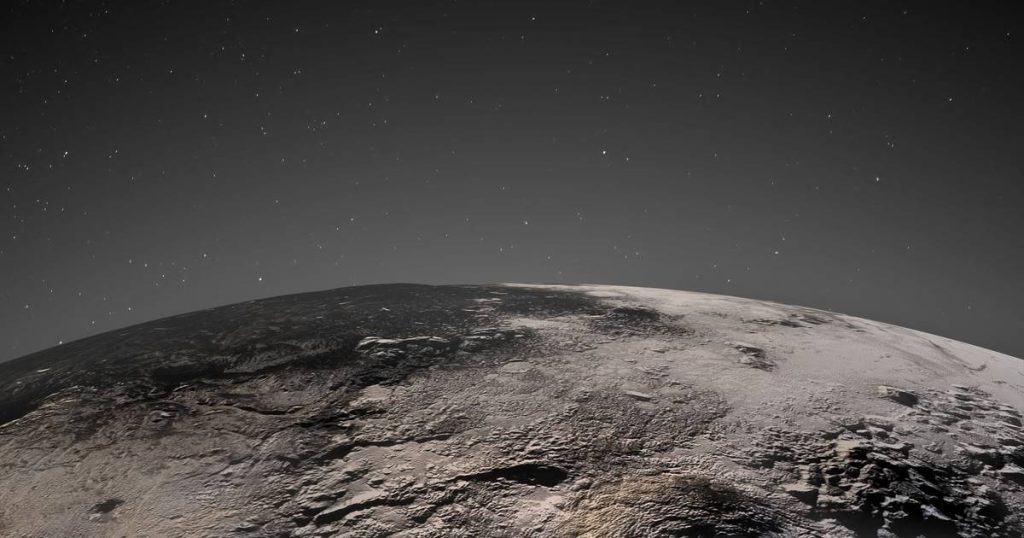Planetary scientists have been discussing Pluto for years, especially the two peaks towering above the dwarf planet’s surface. Some have speculated since 2015 that there could be an ice volcano on Pluto, spewing not lava but large amounts of ice. But no caldera or cauldron-like crater had ever been seen.
Now researchers say it’s not a single ice volcano, but the fusion of several ice volcanoes together. Researchers rely on a complete analysis of images and topographic data. This discovery reignited another debate: What could keep Pluto hot enough to support volcanic activity?
Located on the southern edge of a massive, heart-shaped ice sheet, these unusual surface features were first observed when NASA’s New Horizons spacecraft flew by in July 2015. That flight yielded the first close-up images of the former ice planet and its moons.
At the time, the glacial volcano seemed to be the least unusual explanation for these features. There were no craters near an asteroid or meteorite. Also, there was no evidence of plate tectonics, an important factor in the formation of mountains on Earth. However, Singer and her colleagues were careful not to call them volcanoes at the time. “This is theoretically possible, but there are not many other examples in the solar system. They all also look very different and do not resemble the features on Pluto.”
Read more below the picture
Different from those on Earth
Since those first images in 2015, more have been added, along with formation and topography data. These images have been meticulously analyzed. Taken together, the team concluded that these unusual features are in fact volcanoes, although their appearance and behavior are very different from those on Earth.
“If you look at Mount Fuji or any of the volcanoes in Hawaii from a distance, they look like big, wide, smooth volcanoes, but that’s not what we see on Pluto,” Singer said. Her findings were published in the journal Nature Communications.
cold temperature
From the compositional data, researchers suggest that the material that these volcanoes are made of is mainly water ice. Singer’s team also suspects that the material cannot be a liquid because it is too cold for the dwarf planet. “Pluto’s average surface temperature is about 40 K (-233 degrees Celsius),” says Singer. She says that due to the extremely low temperatures, ice volcanoes are very surprising. According to her, matter cannot be movable at all. This may indicate that Pluto’s rocky core is much warmer than expected. And that the heat energy released in the radioactive decay of some of its elements is somehow retained and released periodically, causing a volcanic eruption.”
Singer honestly admits that she and her team don’t have much information about what’s going on under Pluto’s surface. “But this forces people to come up with creative ideas about how ice volcanoes come about.” She also says that the old idea that Pluto is just an inert ball of ice seems increasingly unlikely.
Read also:
Unlimited free access to Showbytes? And that can!
Sign in or create an account and never miss a thing from the stars.

“Coffee buff. Twitter fanatic. Tv practitioner. Social media advocate. Pop culture ninja.”










More Stories
The number of people with mental illnesses is increasing in Bonaire
Chaos, fundamental conflicts, resistance and doubts. – Climate Gateway
In the German border area with Groningen and Drenthe, much more space is provided for wind turbines